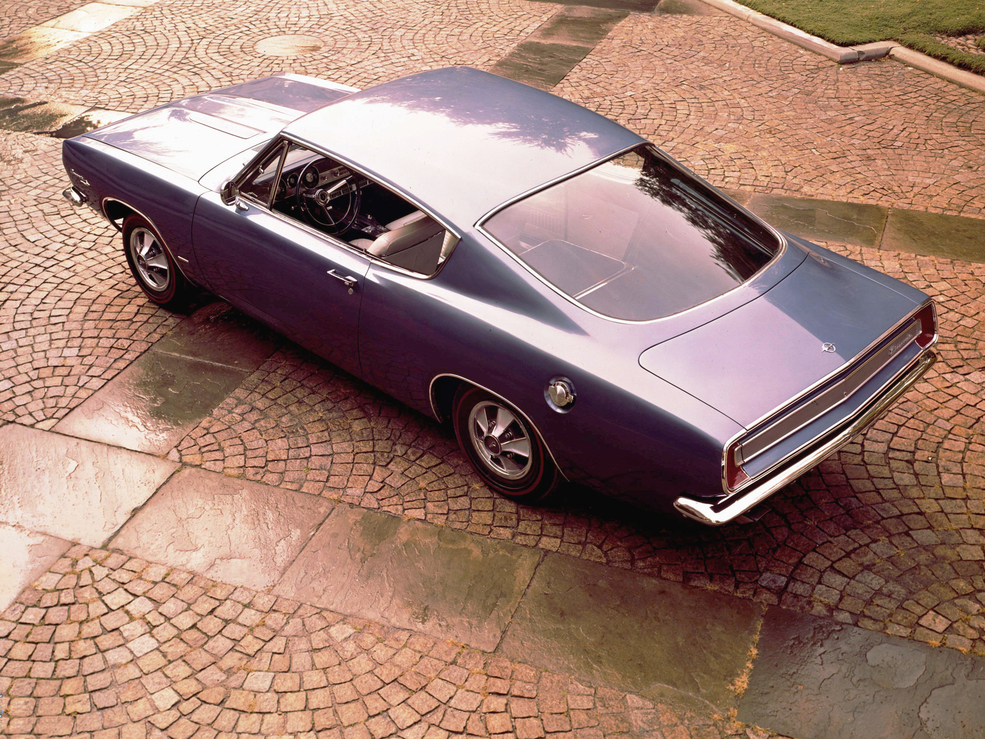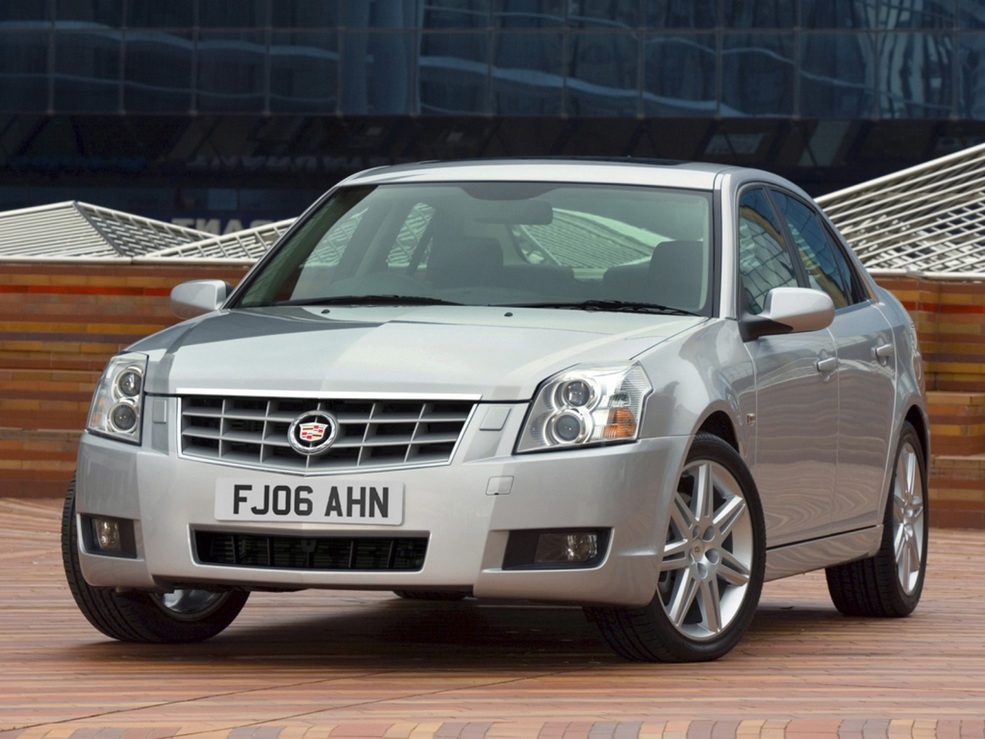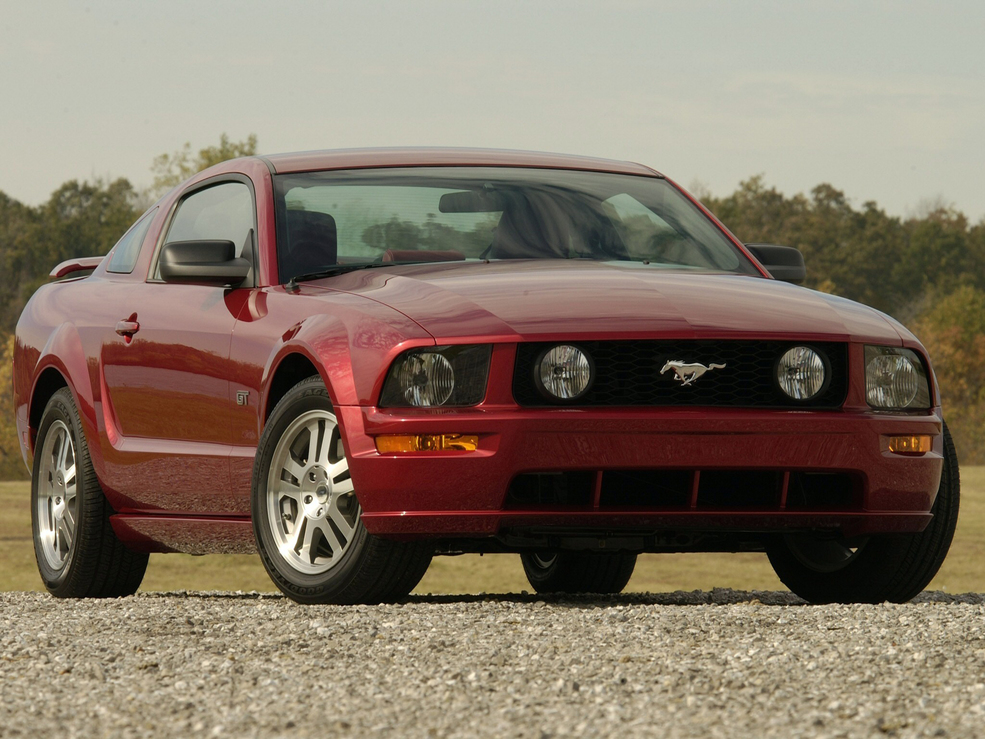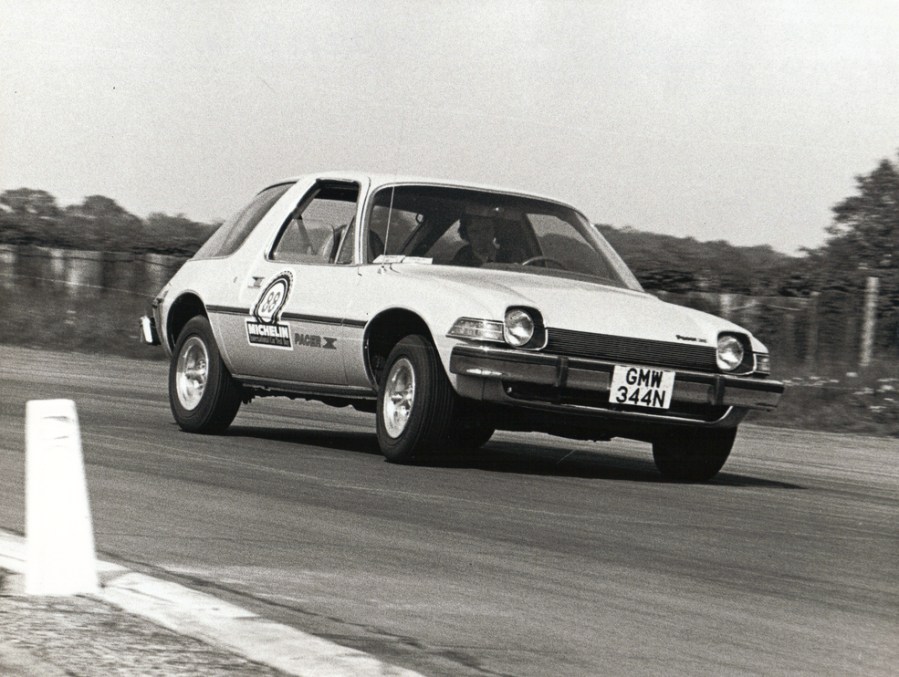Traditionally, American cars haven’t sold especially well in Britain. Barring the occasional pimp’s Cadillac in the mid 1970s and the odd Viper, the British haven’t found the flamboyance of American excess quite in tune with their tastes. But that hasn’t stopped them from trying over the years.
From the hastily converted AMC Pacer with a chain-drive steering system to the Europe-only Cadillac BLS, Britain has played host to a number of American cars intended to show us just how capable a transatlantic car could be. We’ve gathered eight of the most successful and interesting attempts – so if you want to turn heads with a classic from the land of the free, here are our top tips.
AMC Pacer
“We test the Pacer… and wish we hadn’t.” Ominous words from Motor magazine, back when the AMC Pacer was launched in the UK. As wide as a Rolls Royce and as long as a Ford Granada, it was billed as a compact economy car. And by 1970s American standards it was – many US households had bigger engines in their food blenders than the 3.8-litre six cylinder in the Pacer, even if by UK standards an engine of that size was almost unforgivably excessive so soon after a fuel crisis. It bucked the trend toward angular styling by featuring large compound curves, like a psychotropic Allegro. And it worked – the people liked it in its homeland and early sales were healthy.
Less so in the UK – not only was the Pacer’s USP of a longer pavement door reversed in Britain (Leaving passengers emerging into the traffic flow), but the thirstiness and lack of conservatism put people off. So did the sloppy steering – though this was to be expected of a car which ran a chain drive behind the dashboard to the column which remained on the left. Alarmingly, right hand drive conversions are still being done in this way today.

Plymouth Barracudas. 1968-69
Chrysler was good at ensuring its cars were available in right hand drive – not only for the Australian market but offered in the UK too. The range in the mid 1960s was especially strong, with the 1965 London Motor Show featuring everything from the Valiant to the Imperial. Not all were available in right hand rive, but key models including the Plymouth Fury and the Valiant could be ordered in right hand drive from the Chrysler agent. Likewise the Dodge Dart and the Dodge Polara – a solid range which had something for all fans of American glamour.
Arguably the most interesting car to be made available from new with right hand drive in the 1960s from Chrysler’s empire was the Plymouth Barracuda – available in right hand drive for 1968 and 1969. A Valiant-based pony car, the Barracuda appealed in the same way as a Jensen Interceptor might to drive – but to the kind of people who had less money and wanted more flash from it. Values now are slightly higher than for left hand drive Barracudas – but their interest lies more in the history than their rarity.

Chrysler Neon
Arguably the safest and least controversial choice of our list, the Chrysler Neon is a sensible four door five seat two litre saloon. Just like a Mondeo then? Not quite.
In America, the Neon is targeted as the ideal first car for college students or the perfect family car for the parsimonious. Marketed as a sports saloon, Chrysler top bod Bob Lutz referenced a Detroit saying: “Good, fast, or cheap. Pick any two” – and suggested that the Neon was the first car to meet all three.
Supplied to the UK only with 2.0 engines and a choice of 5 speed manual or 3 speed automatic gearboxes, the Neon isn’t exactly a roadburner but the performance is flexible enough – 9.4 seconds to 60 for the RT, just over ten seconds for the standard models. It’s small enough to work on UK roads too -about the size of an equivalent era BMW 3-series, or slightly smaller than a Mondeo. And with used Neons hardly in demand in the UK, a few hundred pounds will secure a very usable and improvable example. We’d advise the SE or the sporting R/T – avoid the LX, it’s fairly spartan inside and for the same money you might as well enjoy the extra kit.

Jeep Cherokee
The Jeep Cherokee was the ideal car for those who wanted the image the Range Rover had always had. In the 1990s the cachet of a prestige 4×4 had gradually eroded – we bought them because the high driving position made us feel special. And when Range Rovers were everywhere, that special feeling was lost. But the Jeep Cherokee never lost it – relatively rare in Britain, talented and with the best badge in the business, the Cherokee has always felt a little separate. And they’re well built too; not only a surprise for a 90s car but a surprise for American cars in general. It’s built to last.
You’ll be lucky to get 20mpg, the packaging might not be brilliant, and the dashboard is typical 1980s Americana, but the Limited comes with all the toys. And it’s not too big for Britain either; unlike SUVs like the Chverolet Tahoe or Cadillac Escalade, the Cherokee is reasonably sized for the average UK driveway. This is one American car that will become a classic not only among fans of American land yachts, but within the wider classic scene – one day, you’ll wish you’d bought one while they’re cheap.

Cadillac STS
Guilty secret time – if I may be personal for a moment, I have a bit of a secret love of the Cadillac STS. It sits in my eBay watch list awaiting the day when a ridiculously cheap example surfaces and I can use it to look like the socially aspirant yet awkward Northerner I secretly am. Offered with a 4.6-litre Northstar V8, the much vaunted 100000 mile service interval between plug changes is often mocked in American car circles as longer than the average Northstar lasts. But from a personal point of view, I admire the technology – the idea that the ECU can select the two coolest cylinders on a rotating basis to get you home – even without coolant in the middle of Death Valley.
It’s no bigger than an XJ either, meaning that it’ll fit down the average B road. And with figures suggesting the UK market took less than 400, you stand less chance of seeing another than you would of seeing an MG Maestro Turbo. Rarity matters, when one of your car buying criteria is that you look back at it in car parks as you walk away.

Chrysler PT Cruiser
The Chrysler PT Cruiser is one of the easiest examples to use when arguing that automotive taste is subjective. There’s a club for them – UK Cruisers Club – and a band of devotees who love the idea that a family car could be so refreshingly different to boxes like the MK4 Astra and the Renault Megane. But equally, there are those to whom the pseudo hotrod styling of the PT Cruiser represents the same sort of unusual decision as geese voting for weekly Christmas dinners.
This if course ensures its classic status is assured – as we’ve learned with the Austin Allegro, the Edsel and the NSU Ro80, controversy and debate keep cars in the public consciousness and ensure they’re accepted as classics long before others of their era. And it makes a decent enough daily driver too – 2.0 petrol and 2.2 diesel engines are par for the course in cars of this class, it was brisk enough, and not ridiculously thirsty. The high roofline was a boon for parents – strapping children into child seats had never been so easy. And with just £1000 getting something half decent, there’s never been a better time to buy.
Cadillac BLS
OK, this might be a little newer than the cars which usually grace these pages, but stick with us – the Cadillac BLS is a future classic through curiosity value alone, as it is to this day the only Cadillac production model never to have been available in North America.
The BLS followed the lead taken by the ill-fated Cimarron and the forgettable Catera. A new, smaller Cadillac to attract more youthful buyers – especially in the executive strongholds of Europe. Like the previous attempts, the BLS was based on a European theme – this time the SAAB 9-3, which shared chunks of its underpinnings with the Vauxhall/Opel Vectra range.
Just a few hundred BLSes were sold in Britain, so it carries the exclusivity that will make your neighbours’ heads turn. It’s suitably sized for European roads, can be serviced by your Vauxhall dealer, and will be a controversial choice for any American car show. Do your sums right and get a diesel, and it’ll even be cheap to fuel and tax as an everyday car. Those factors endear it to us – and the best part? £2500 should be ample to get something half decent.

Ford Mustang (2000s)
Ford put a lot of effort into the Mustang in the 2000s -and it showed. While retro design isn’t for everyone, the success the 2005 Mustang GT enjoyed acted as proof of concept for Ford. While the retro Thunderbird had attracted relatively few fans, love for the traditional pony car sprang back when it was evident that Ford meant business. The Fox-body cars had led to despondency among the Mustang devotees; homogenous sporting coups which many felt were an affront to the name and the concept of a separate, different, personal car. But the new Mustang GT of 2005 changed that – different, muscular, and fun once again. The cornucopia of tuned examples from Shelby, Roush and others cemented the recipe – and the retro Mustang was here to stay. Not only is it desirable across all generations in left hand rive, but UK demand has proven so popular that Ford is now selling the current Mustang through UK dealers with right hand drive.
They hold their value well here too, with few available for under £10000 even fifteen years on. And with no sign of that changing, it’s a modern classic that makes a worthwhile investment to boot.
Conclusion
If we wanted to buy an American car for regular use, we’d be buying a Cadillac BLS – spares availability and rarity combine in one usable everyday package. But the excessiveness of a Seville STS appeals on a personal level, while the flamboyance of the PT Cruiser or the homely sense of the Neon might be what float your boat. What’s certain is that none of these cars are default choices – by choosing them you’re making a statement that you want to be different. And as they age, it’s that very difference which will ensure their classic status endures.




